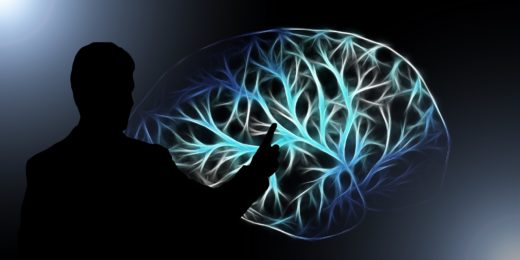When the TV heartthrob, Luke Perry, of "Beverly Hills, 90210" fame, died of a stroke in March, it was a surprise to many people. How could someone so young, only 52 years old, die of an old person's ailment?
But, as Stanford neurologist Greg Albers told me in this 1:2:1 podcast, age is one of the myths of stroke: "You can have stroke at any age. We have children who have strokes, adolescents, young adults. It's most common in the elderly but strokes can hit at any age."
Albers, director of the Stanford Stroke Center, has been working to understand the mechanisms governing strokes for nearly 30 years. Thanks to that dogged work, Albers hit gold in 2018 with the release of data from a large multisite clinical trial, DEFUSE 3.
Previously, it was thought that if a patient wasn't treated within a few hours of their stroke, it was hopeless. Tissue would have deteriorated to the point of no return, which all too often resulted in death or long-term nursing care. While the advance of the drug called tissue plasminogen activator (tPA) in the mid 1980's expanded the treatment window up to three hours, the drug was hardly a panacea and it didn't work for the majority of stroke patients, Albers told me.
The DEFUSE 3 trial opened a whole new world of possibilities. Stroke treatment could take place up to 24 hours after the stroke and it could, as Albers explained, reap huge benefits. Moreover, on the day that Albers presented the data from DEFUSE 3 at the International Stroke Conference, the American Stroke Association recognized the breakthrough by simultaneously releasing new guidelines that changed the stroke treatment window from 6 to 24 hours.
As Albers explains:
...we're talking about a 50 percent reduction in death or nursing home existence for treatable stroke patients and a threefold increase in functional recovery. In other words, three times as many people being able to go back to do everything that they did before their stroke and half as many patients winding up in a nursing home or dying.
During Stroke Awareness Month, here are key facts about stroke:
- According to the National Stroke Association, each year nearly 800,000 people experience a new or recurrent stroke.
- Stroke is the leading cause of adult disability in the U.S.
- Strokes can happen to anyone at any age, including teenagers, children, newborns and unborn babies.
- Although it is the fifth leading cause of death in the U.S., up to 80 percent of strokes are preventable.
Much of the research advancing the understanding and treatment of stroke has taken place at Stanford helmed by Albers and his colleagues. During our conversation, he put the work into context:
I consider this the most exciting time in stroke research because for the last two decades since we've had the approval of tPA, there have been no therapeutic advances other than a catheter technique to pull the blood clot out. People were convinced that six hours was as far as you could go. Now, with DEFUSE 3 and treatment opening up to 24 hours, people now believe the stroke evolution is highly individualistic.
It's hard to see so many people who are disabled by stroke, paralyzed, unable to speak, and to realize that we can make a huge difference in their lives. This is why you become a physician, to try to be able to do this type of research and have this type of impact.
Photo by chuttersnap






